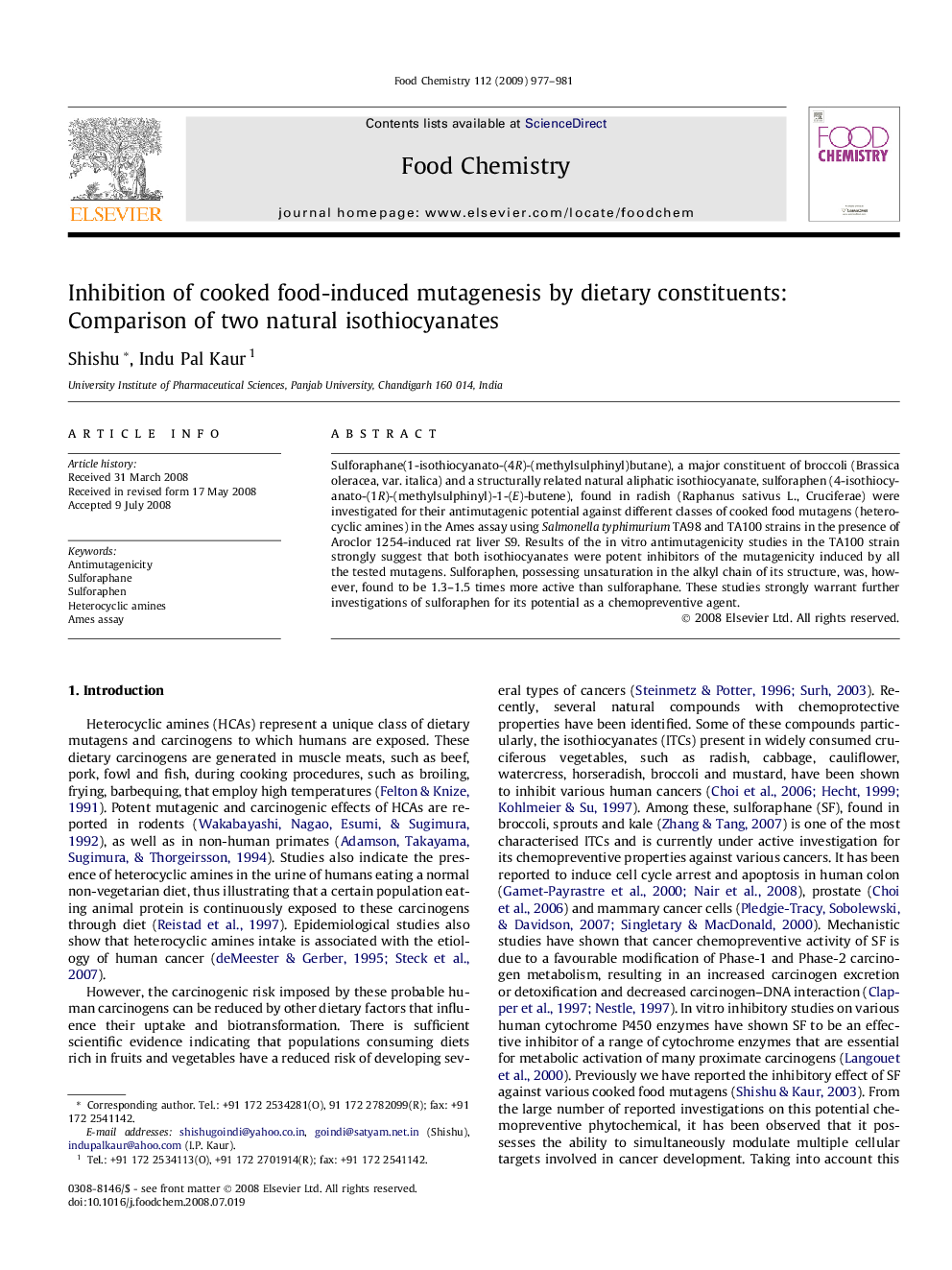| Article ID | Journal | Published Year | Pages | File Type |
|---|---|---|---|---|
| 1186560 | Food Chemistry | 2009 | 5 Pages |
Sulforaphane(1-isothiocyanato-(4R)-(methylsulphinyl)butane), a major constituent of broccoli (Brassica oleracea, var. italica) and a structurally related natural aliphatic isothiocyanate, sulforaphen (4-isothiocyanato-(1R)-(methylsulphinyl)-1-(E)-butene), found in radish (Raphanus sativus L., Cruciferae) were investigated for their antimutagenic potential against different classes of cooked food mutagens (heterocyclic amines) in the Ames assay using Salmonella typhimurium TA98 and TA100 strains in the presence of Aroclor 1254-induced rat liver S9. Results of the in vitro antimutagenicity studies in the TA100 strain strongly suggest that both isothiocyanates were potent inhibitors of the mutagenicity induced by all the tested mutagens. Sulforaphen, possessing unsaturation in the alkyl chain of its structure, was, however, found to be 1.3–1.5 times more active than sulforaphane. These studies strongly warrant further investigations of sulforaphen for its potential as a chemopreventive agent.
